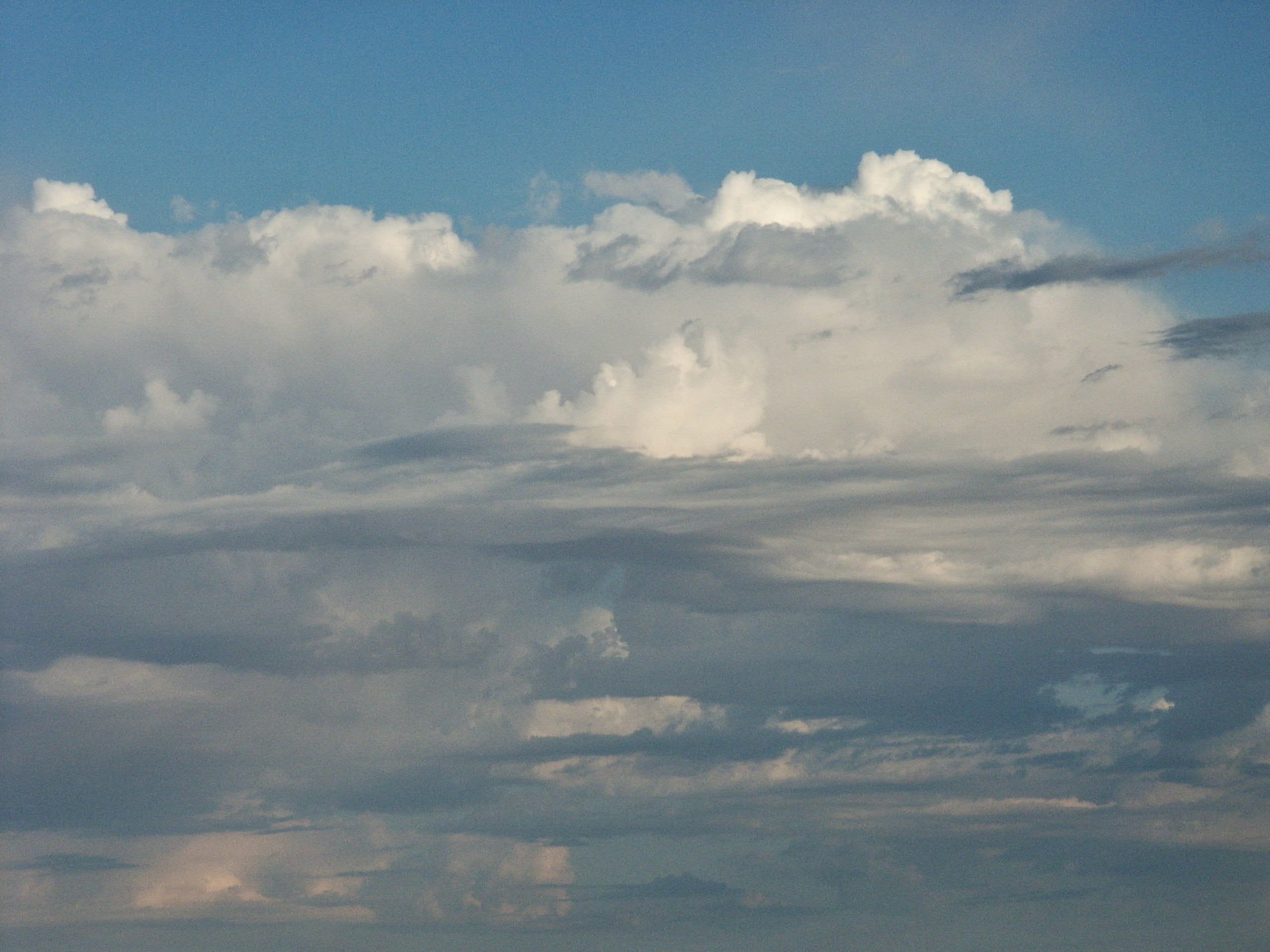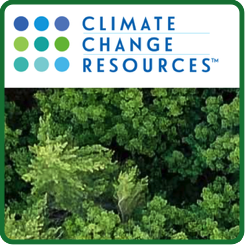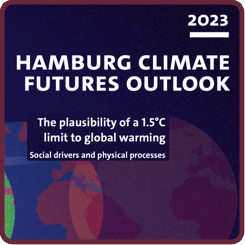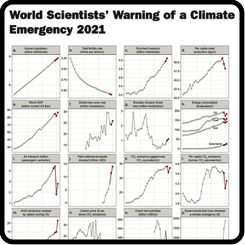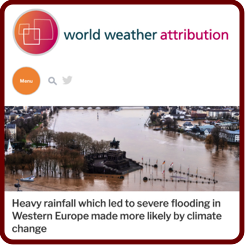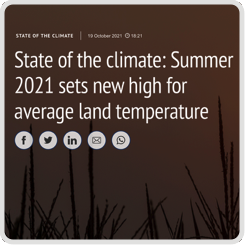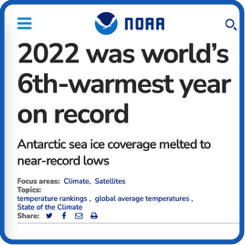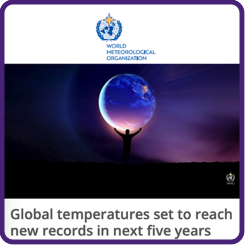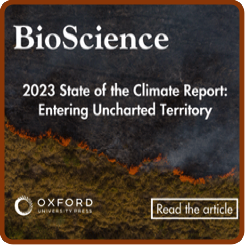
🔝
🔝
Core science information resources
· Also see International institutions & programs at the Science & research institutions page
· A joint initiative of Columbia University's LDEO and the Sabine Center
· “This database serves as a thematically organized repository of scientific information relevant to
climate litigation and policy-making. These resources may be useful to scientists interested in
understanding how their work might fit into a range of law and policy applications, to lawyers
interested in understanding how existing and cutting edge science may support or undermine
their cases or defenses, and to policy practitioners looking for resources to support a wide variety
of climate mitigation and adaptation policies.”
Climate Lab Book: Open Climate Science
Climate Science at the National Academies [USA]
Copernicus Climate Change Service (C3S)
Endowment for Climate Intelligence (ECI)
International Climate Change Information Programme (ICCIP)
Mendeley Climate Change Library
Oak Ridge National Laboratory Distributed Active Archive Center (ORNL DAAC)
Carbon Monitoring System (CMS)
US National Aeronautical & Space Agency (NASA)
Global Climate Change - Vital Signs of the Planet
“About” climate change pages (a small selection)
Climate change @ McKinsey & Company
Climate change @ UN Dag Hammarskjöld Library
General reference & information resources
Climate Change Indicators Dashboard @ IMF
Climate Change Knowledge Portal @ World Bank
Climate Change Resources (CCR)
· This is a well-organized and extensive collection of climate change materials; see the Sitemap
for an overview.
· “We divide our thinking into four principal elements: Truth (what’s happening), Consequences
(what we’re facing because of what’s happening), Mitigation (how we can reduce the damage),
and Adaptation (how we can adjust to a world we are changing). The site aims both to provide
understanding and also to reveal the paths to action.”
· "... an archival database of news, information and documents. The information
compiled here is collected from various sources and is based on more more than
20 years of research and data collection."
Climate Lab Book: Open Climate Science
ClimateLinks @ USAID
· "...a global knowledge portal for USAID staff, implementing partners, and the
broader community working at the intersection of climate change and international
development. The portal curates and archives technical guidance and knowledge
related to USAID’s work to help countries mitigate and adapt to climate change."
Climate Science at the National Academies [USA]
· "...a digital science platform for cataloging and mapping the impacts of climate
change. Currently in open-beta release, the platform is designed to identify the
chain of connections between greenhouse gas emissions and individual climate
events."
Common Sense Climate Index @ NASA
Copernicus Climate Change Service (C3S)
International Climate Change Information Programme (ICCIP)
Mendeley Climate Change Library
NASA: Global Climate Change - Vital Signs of the Planet
Oak Ridge National Laboratory Distributed Active Archive Center (ORNL DAAC)
Carbon Monitoring System (CMS)
Social science
Climate Social Science Network (CSSN)
Select readings in climate change science
· In reverse chronological order
Convergence on climate warming by black carbon aerosols
· 2016 ~ Orjan Gustafsson and Veerabhadran Ramanathan ~ PNAS
· Black carbon (BC), emitted from many combustion reactions, is the strongest absorber of visible
solar radiation
· In addition to long-term environmental consequences (such as changes in precipitation and
temperature), BC results in extreme detrimental health effects.
· Climate models systematically underrepresent the effects of BC
The deep ocean under climate change
· 2015 ~ Lisa A. Levin and Nadine Le Bris ~ Science
· The deep ocean has the capacity to absorb both heat and carbon dioxide, keeping both from
affecting the atmosphere
· This absorption threatens marine biodiversity and ecological equilibria with warming waters,
ocean acidification, deoxygenation, and other challenges
· The UNFCCC must recognize the threats to the deep ocean ecosystems and act before it is too late
Mathematical and physical ideas for climate science
· 2014 ~ Valerio Lucarini et al. ~ Review of Geophysics
· Mathematical models can be used to represent climate phenomena such as geophysical fluid
dynamics (GFD)
· Describes important equations used to describe the energy budget and changes in energy flows
through climate systems
· These models can be used to predict climate change and responses to anthropogenic intervention
Climate change in mountains: A review of elevation-dependent warming and its possible causes
· 2012 ~ Imtiaz Rangwala and James R. Miller ~ Climatic Change
· Focuses on four locations: the Swiss Alps, the Colorado Rocky Mountains, the Tibetan
Plateau/Himalayas, and the Tropical Andes
· Concludes that some mountain regions may be experiencing higher warming rates than lower
elevation areas
· It is uncertain how high elevations areas and mountain ranges respond to climate change, but it is
critical to understand the role of mountain regions in providing the world's freshwater
· 2012~ James Hansen, Makkiko Sato, and Reto Ruedy ~ PNAS
· Provides an easy-to-understand yet thorough demonstration of real-world events and their links
to climate change.
· Shows observable proof of climate change in a clear and irrefutable way.
· Creates the analogy of Climate Die, which show how even very cold winters are still possible
in a world of climate change, something many deniers use as ammunition against climate change.
Robust Responses of the Hydrological Cycle to Global Warming
· 2006 ~ Isaac M. Held and Brian J. Soden ~ Journal of Climate
· Discusses the impact that climate change has on regional weather patterns with a detailed lens.
· Described as the “first and perhaps still the only”, consistent systematic conclusion on precipitation
change based on global warming: “Wet-get-wetter, dry-get-drier”.
· Voted by a panel of climate scientists as tied for the second most influential piece of literature on
climate science of all time.
A globally coherent fingerprint of climate change impacts across natural systems
· 2003 ~ Camille Parmesan and Gary Yohe ~ Nature
· Documents trends between biological species and climate predictions showing the impact of
climate change on species
· Frequently cited climate science paper considered by many to be the first formal acknowledgment
and study of the impacts that climate change has on animal and plant species.
· Provides a comprehensive study of how many plants and animals have been impacted by
climate change.
IPCC Third Assessment Report- The Scientific Basis
· 2001 ~ Houghton et al. ~ IPCC
· Arguably the most important IPCC report as it definitively proclaims the scientific basis of climate
change since the start of the reports
· Demonstrates the anthropogenic basis of climate change
Surface albedo data for climactic modeling
· 1983 ~ A. Henderson-Sellers & M. F. WIlson ~ Reviews of Geophysics
· The albedo of the surface of the Earth can create important feedback loops that affect the rate of
climate change
· Albedo needs to be better incorporated into climate models in order to produce accurate
assessments
Atmospheric carbon dioxide variations at Mauna Loa Observatory, Hawaii
· 1976 ~ Keeling et al. ~ Tellus
· Reported carbon dioxide recordings and findings based on measurements from Mauna Loa
· Continuous monitoring up to present day, providing the most accurate measurement of carbon
dioxide levels in the atmosphere
· Important for providing basis for study of impacts of carbon dioxide levels
Thermal Equilibrium of the Atmosphere with a Given Distribution of Relative Humidity
· 1967 ~ Manabe and Wetherald ~ Journal of the Atmospheric Sciences
· Explores the impacts of carbon dioxide in the atmosphere on global temperatures
· Findings are still applicable today; demonstrated accuracy of the climate modeling
The Artificial Production of Carbon Dioxide and its Influence on Temperature
· 1938 ~ Guy Callendar ~ Quarterly Journal of the Royal Meteorological Society
· The first paper to definitively combine the study of the greenhouse effect, global temperature rise,
and carbon dioxide, calculating how much humans have already changed the climate, and how
much could change in the future.
· Marked a large step forward for climate research, as it was the first paper to actually show that the
problem could become severe.
· The actual influence of the paper is debatable, as it was largely viewed skeptically when first
published, but it has grown to be looked back on as a steppingstone of climate science.
On the Influence of Carbonic Acid in the Air Upon the Temperature of the Ground
· 1896 ~ Svante Arrhenius ~ The London, Edinburgh, and Dublin Philosophical Magazine and Journal of Science
· Perhaps the first paper to show that an increase in the concentration of greenhouse gases leads
to an increase in global surface temperatures.
· Proposes many equations and reactions that are still used today when calculating various changes
with greenhouse gases.
Circumstances affecting the heat of the sun’s rays
· 1856 ~ Foote ~ American Journal of Science and Arts
· Carbon dioxide is the key mechanism in trapping heat, allowing Earth to stay at a livable temperature
· Basis of the greenhouse effect
Contents of this page:
· Core science information resources
· “About” climate change pages (a small selection)
· General reference & information resources
· Select readings in climate change science
Subpages:
· Science & research institutions (including IPCC)
· Major climate change science assessments & reports
· Modeling, mapping, scenario planning +
· Carbon accounting & calculators
· Climate change communications & simulations
· Climate change books & bibliographies
Also see:
Climate change science & information
The world's most important news, continuously updated:
